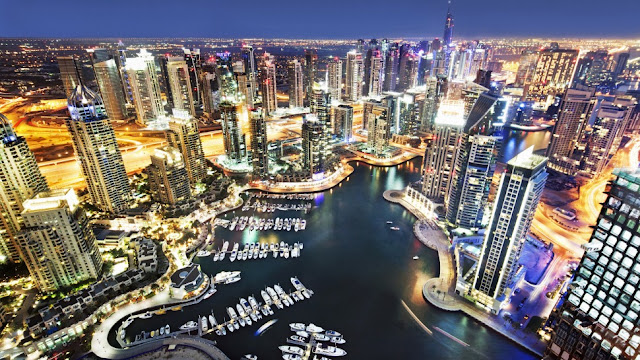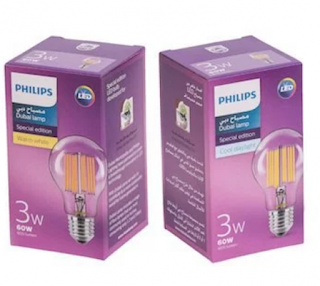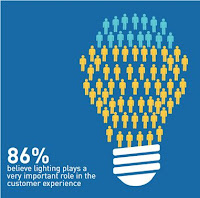TAG | LED lamps
6
Dubai rules all new properties must fit Philips LED lamps
Comments off · Posted by admin in LED, LED panels, LED Spots, LED Tubes, Philips LED
Fitting Philips ‘Dubai Lamp’, will be made the basic requirement for getting a Building Completion Certificate in Dubai.
Philips struck up a good deal!.. All new buildings in Dubai will soon be compelled by law to install specific LED lamps, the municipality has ruled, after striking a deal with Philips Lighting to supply millions of light sources to the emirate.
Authorities in Dubai signed a five-year contract with Philips to create the ‘Dubai Lamp’, which, it it is claimed, will be the first commercially available 200 lumen per Watt LED lamp.
The new fixtures will replace 80 percent of traditional lights currently in the emirate’s residential buildings, and, as of this year, all new buildings constructed in the city will have have to feature the Philips LED.
Fitting LED in new buildings will be made the basic requirement for getting a Building Completion Certificate, by the end of this year.
The initiative will initially focus on new buildings and big complexes such as schools, hospitals, mosques and shopping centres. A study will also be undertaken to develop a strategy of implementation for older buildings, in an attempt to ensure that the scheme ensures a wider legacy and that energy savings and a positive environmental impact continue to grow overtime.
Philips has been commissioned by the Dubai authorities to manufacture and supply two million of the ‘Dubai Lamps’, which will not contain mercury or generate heat. The Dubai Municipality plans to install 10 million Dubai Lamps before the end of 2021.
‘It will be made the basic requirement for getting a building completion certificate. This will be beneficial for both sides. The owner of the building will be able to save a lot of money on energy charges and we will able to protect the environment,’ Hussain Nasser Lootah, director general of Dubai Municipality, told The National.
‘In the beginning, we will concentrate on new buildings and we will complete a study of old buildings to see what can be done.’
Lootah said the latest agreement which is in line with government directives, supported the Dubai Integrated Energy Strategy, which targets a 30 percent reduction in energy consumption by 2030, and the Dubai Carbon Abatement Strategy, which is aimed at reducing carbon emissions by 16 per cent by 2021.
The lamps will be available in four models, both in cool daylight and warm white colours. That includes 1W candle lamps to replace the 25W incandescent lamp, 2W bulbs to replace 40W incandescent lamps, 3W bulbs to replace 60W incandescent lamps, and the 3W MR16 Spot to replace 50W halogen spots.
Novel Energy Lighting supplies the full range of Philips LED lamps, tubes, and luminaires. Please visit us today, or email: sales@novelenergylighting.com or call (0208-540-8287) to discuss you project needs.
dubai lighting · LED lamps · Novel Energy Lighting · philips led · Philips LED bulbs · philips led luminaires · Philips led panels · philips led tubes · philips lighting
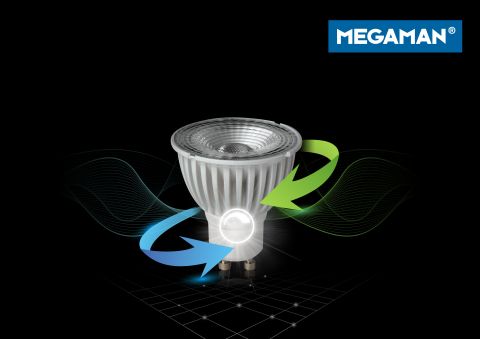 With the advent of LED lighting, the relationship between legacy dimming technology and LED lamps has become an uneasy one. Here MEGAMAN® shows how to overcome such difficulties.
With the advent of LED lighting, the relationship between legacy dimming technology and LED lamps has become an uneasy one. Here MEGAMAN® shows how to overcome such difficulties.
New for old?
One of the big areas for dimming problems comes when home owners decide to switch out all of their traditional lamps for LEDs, but don’t change the dimmers at the same time. This is largely down to the lack of public knowledge about the fact that trying to combine old and new technologies can lead to all kinds of issues.
The problems that can occur when new and old are combined include: lamp flicker, flashing, an inability to dim as low as required and failures with the LED and/or dimmer. Even if the LED lamps seem to initially respond well to dimming, over time, the use of LED light sources on a legacy dimmer can have longer-term implications that lead to call-backs, weeks or months after installation.
The root of the problem
Almost all legacy dimmers designed for incandescent light sources are leading edge or trailing edge dimmers that commonly use a TRIAC/transistor as the key control device. This chops out parts of the voltage and reduces power to the light source in order to achieve the dimming performance. Though these work with incandescent lamps, LED lamps have an internal filtering circuit that distorts the supply signal and can result in system oscillations that are observed as flickering or flashing.
As well as encountering flickering and variable dimming performance, in extreme cases incompatible dimmer switches cannot be turned on, or suddenly shut off, can burn out, or permanently damage the LED lamps. In addition, traditional dimmers have a minimum load requirement of 40W or 60W, something that causes problems when replacing them with low wattage LED equivalents.
GU10’s – the LED opportunity
With halogen directional reflector lamps being phased out across Europe from September 2016*, there will be an increased push from homeowners for LED replacements. With the advances in LED lighting technology, there are now a wide range of exceptional alternatives to halogen lamps.
However, dimmable LED GU10 lamps are complex pieces of engineering, as they have to house a transformer, as well as dimmable driver components. There are at present a lot of dubious dimmable LED replacement lamps on the market. As with most things, you get what you pay for. So avoid the lower end of the market and choose a trusted LED manufacturer.
MEGAMAN has just launched its new selection of GU10 lamps (that incorporate the company’s new Hybrid Reflector and U-DIM™ technology – see products here). Available in both the popular Economy range and Professional range, these lamps are compatible with the widest possible range of existing dimmers, whether they are leading-edge or trailing-edge.
Overcoming LEDs and Dimming Problems:
Solution One: When keeping the traditional dimmer
For those installers faced with a homeowner who wants to keep their dimmers, wants LEDs and yet doesn’t know what type of dimmer has been installed, a solution is now at hand. MEGAMAN has developed its new U-DIM™ technology, which takes the headache out of switching to dimmable LEDs.
MEGAMAN U-DIM dimmable LEDs are compatible with the widest range of existing dimmers, whether they are leading-edge or trailing-edge dimmers. With the mains voltage halogen reflector lamps being phased out in Europe from 1st September 2016, home owners will need new lamps to operate perfectly with their existing dimmers and this dimming solution is a giant step in that direction. U-DIM LEDs are easy to use and it is possible to ‘plug-and-play’ to upgrade a lighting scheme.
MEGAMAN U-DIM technology is offered as a standard feature on MEGAMAN Dimming LEDs and they offer superior performance and flicker-free dimming from 100% right down to just 5%.
Solution Two: When replacing with new LED dimmers
Dedicated LED dimmers are a good way to overcome many of the traditional dimmer/LEDs issues. This is because they use micro control units to monitor and eliminate waveform noise and distortion, generating a digital signal to the control component that creates a stable and clean chopped waveform. If these dimmers are combined with LED lamps that have been tested and approved for compatibility (this is usually found on the dimming and/or LED lamp manufacturer’s website) – see the MEGAMAN one here as an example, then smooth LED dimming is guaranteed from day one of installation.
Dimming LEDs Checklist:
- Buy dimmable LEDs from a brand you trust
They will have tested a wide variety of dimmers with their lamps and have more comprehensive dimming compatibility lists
- Trailing edge dimmers work best with LEDs
However, if the client doesn’t want to replace their leading edge dimmers, then use LEDs that have been proven to dim well with this technology, such as MEGAMAN U-DIM LEDs
- If in doubt, contact the LED manufacturer
Unsure of whether the dimmer and LEDs are compatible? Check with the manufacturer’s online compatibility list, or contact their team for more advice
*For more information on the halogen ban – visit www.planfortheban.eu
Visit Novel Energy Lighting to buy your Megaman U-DIM GU10 lamps today
dimmable led gu10 · led dimming · led GU10 · LED lamps · megaman gu10 · Megaman LED GU10 · megaman u-dim · Novel Energy Lighting · u-dim
16
GDP due to lighting ‘must fall to tackle climate change’
Comments off · Posted by admin in LED
 |
| Former Friends of the Earth chief Jonathan Porritt says we must accept a reduction of the historic proportion of GDP attributable to lighting and its associated energy requirements if we are to have an impact on greenhouse gas emissions. |
Delivering the inaugural annual lecture of the Worshipful Company of Lightmongers, he said: ‘We need to find ways of delivering increasingly sophisticated lighting services to the whole of humankind…in ways that cause considerably less impact, which probably needs less total economic activity.
‘Lighting is responsible for anywhere between 16 and 18 per cent of total electricity consumption in the world today, depending on how you do the calculations. So this is an absolutely massive part of the challenge. And although it’s rarely spoken about in those terms, people are beginning to understand that if we are going to make a difference to this story, we have to make a difference on lighting.’
Referring to the barrage of criticism from campaigners over the UK Government’s decision to approve a third runway at Heathrow Airport in London, he pointed out that aviation is responsible for 2 and 4 per cent of total global greenhouse gas emissions.
‘It’s relatively small in fact. When you compare lighting to these other big sectors, you can begin to see why it is people are focusing suddenly on the need to get lighting right.
‘What we know is that if you back right back before electricity to when people were using whale oil and tallow and candles, the contribution of the lighting industry as a whole has remained astonishingly constant over hundreds of years. It always contributes around 1.7 per cent of total GDP in any one year.
‘This rather amazing statistic was unearthed by Professor [Jeff] Tsao in the paper he wrote in 2010. And I quote: “New applications of increasingly efficient lighting technologies have consistently offset the energy efficiency gains from new lighting technologies almost exactly, leaving the portion proportion of global GDP attributable to lighting essentially unchanged for hundreds of years”.
‘So lighting’s always had this critical part in the economy of human societies at different points, at roughly 1.7 per cent of GDP.
’The problem is, we need to do something about that,’ he told a London audience of lighting executives. ‘I hope this isn’t going to upset people here but we kind of need to get that figure down. Because if we are to have a massive contribution from lighting to addressing this problem, we need to find ways of delivering increasingly sophisticated lighting services to the whole of humankind – not just the rich world – in ways that cause considerably less impact, which probably needs less total economic activity.’
However, he praised the lighting sector for its technological achievements, especially the development of the blue LED by Professor Shuji Nakamura and his team in the 1990s. Quoting the US Department of Energy, he said: ‘ “the widespread introduction of LEDs today will reduce electricity consumption by around 348 TWh by 2027, equal to the output of 44 large power plants, saving more that $30 billion at today’s power prices”. So you can see why this is going to have an impact on GDP. It takes $30 billion of economic activity out of the US economy, that translates through into the economic multipliers.
‘If the Indian government were to replicate the LED roll-out that it is currently undertaking in Pondicherry, it would reduce electricity demand by over 50 TWh and cut consumer bills by over $3 billion. These are just massive changes that are underway now.’
He also highlighted the president of Institute of Physics’ claim that the optimum use of LED lighting could reduce lighting’s share of the global electricity consumption in buildings from 19 per cent to 4 per cent. ‘That translates to the total electricity consumption of Europe.’
electricity demand reduction · energy efficient lighting · gdp · led GU10 · LED lamps · led lighting · led tubes · Novel Energy Lighting · power saving
1
Increased Dimming Compatibility With New Megaman GU10 Range
Comments off · Posted by admin in LED, LED downlights, LED GU10, LED Spots
Megaman, a leading LED lighting solution provider, is proud to announce the launch of a new selection of GU10 lamps that incorporate the company’s new Hybrid Reflector and U-DIM™ technology.
A new 4W (250lm) GU10 and 5W (360lm) dimming GU10, with 25,000 hours’ life, are now available in Megaman’s popular Economy range, whilst the Professional range sees the addition of a new 5.5W (500lm) and 7W (550lm) dimming GU10, both with 50,000 hours life.
All of the new dimming GU10’s incorporate Megaman’s revolutionary U-DIM™ technology as standard – making the lamps compatible with a wider possible range of existing dimmers, whether they are leading-edge or trailing-edge.
The new 7W addition to the Professional Range also features Megaman’s new Hybrid Reflector, providing excellent optics, high efficiency and precise beam control.
Megaman’s Economy range comes with 2 years warranty and the Professional range with 3 years as standard, extendable to 5 years through the website.
Buy Megaman GU10s from our website: www.novelenergylighting.com, or call us to discuss volume requirements: 0208-540-8287, email: sales@novelenergylighting.com
LED downlights · led GU10 · LED lamps · led spot · megaman 5.5w gu10 · megaman 5w gu10 · megaman 7w gu10 · megaman gu10 · Megaman LED · Megaman LED GU10 · u-dim
25
Megaman Survey Shows Lighting Is Big Business For Hospitality Sector
Comments off · Posted by admin in LED, LED GU10, LED MR16 lamps, LED Spots
86% of hospitality professionals believe lighting plays a very important role in the customer experience. The findings of the survey, sponsored by Megaman, reveal that lighting is big business in the hospitality sector:
- only 1% of those surveyed think lighting is of no importance in the customer experience.
The findings show that good lighting encourages guests to stay longer and come back for more:
- 72% have left a venue earlier than planned because it was too brightly- or poorly-lit
- 74% have stayed longer than planned because the lighting made them feel relaxed and welcome.
Respondents thought a well-lit venue is:
- “somewhere that draws you in” (36% of respondents)
- “somewhere to spend time” (34%)
- “somewhere to go back to” (26%)
- none of the above (4%).
The survey revealed that respondents thought that upfront lighting refurbishment costs are less important than ambience. When making decisions on new lighting in a venue, hospitality professionals say that key considerations are:
- the effect and ambience of the new lighting (67%)
- the ability of staff to dim the lights (43%)
- energy bill/CO2 savings (31%)
- the upfront costs (23%).
Overall, 43% of those surveyed have been involved in a lighting refurbishment in their present or previous venue and said:
- the new lighting had been well received by customers – 84% of customers gave positive feedback on the lighting refurbishment
- good lighting boosts business – 91% think the lighting refurbishment had a positive impact on business in terms of an uplift in sales or profits
- education is still needed about the benefits of LEDs.
Only half of all hospitality professionals (49%) think a halogen lamp ban next year would be a positive change for them, while 36% say it would not affect them at all and 15% think that a ban will have a negative impact on them.
Fred Bass, managing director of Neonlite International, the brand owner of Megaman, said: “This survey supports what we are seeing in our day-to-day business within the hospitality sector – good quality lighting is appreciated and a well-lit scheme attracts customers who stay longer and spend more.
“However, the one area where I think we are at the cusp of a tipping point is in the understanding of the benefits of LEDs amongst the majority of those in the hospitality sector. Although half of those surveyed say that they think the banning of halogen lights and introduction of LED equivalents would be positive, there is still another half who are unsure.
“As more and more bars, restaurants and hotels experience the benefits of the latest in LED lighting technology, I believe we will see a dramatic sea-change in favour of LEDs.”
hopsitality led · hospitality lighting · led ambient lighting · LED downlights · led gu10s · LED lamps · LED spots · Megaman LED · Novel Energy Lighting
Rejuvenating light clinic opens at Harvey Nichols in London. PLUS: LED farm produces 12,000 lettuces a day. AND: GE biosensors monitor athletes at Rio Olympics. Lux Today August 16th 2016.
led exposure · led farm · led for skin · LED lamps · led lighting · lux today · Novel Energy Lighting · Rejuvenating light · vertical farming
 |
Elephants are causing serious headaches for farmers in India. |
 |
| Elephants have now started coming out of the forest throughout the year instead of only during harvest seasons. |
LED lighting is being inventively utilised in East India to prevent rampaging elephants from trampling farmer’s crops.
For months farmers in Odisha have been battling to prevent elephants from raiding vegetables, fruits and paddy. Miles of trenches and solar fencing have all failed to prevent the incursions, but now a newly installed low cost lighting system is showing signs of success.
Flashing LED lights suspended on bamboo poles have been installed at sixty metre intervals across forty-five acres of crops. The lights were placed so they would be at the elephant’s eye level, while being visible from a long distance.
Despite the fields being full of tomatoes, pumpkins and bananas, the elephants have opted to keep their distance from the illuminated crops.
‘The light system has been designed based on our field experience with elephants and their habits,’ Biswajit Mohanty, project director at the Wildlife Protection Society of India (WPSI) told The Hindu newspaper.
‘We knew that the elephants would be scared of flashing lights instead of fixed and powerful lights. We developed this design using low power LED bulbs used as strobes.’
The LED system was also used during the lucrative Indian mango season, which runs from April to June.
Hopefully the lights will be popular with farmers so that they can sleep peacefully instead of chasing elephants all night.
Biswajit Mohanty – The Wildlife Protection Society of India
‘I used to incur huge losses due to elephant herds entering my orchards and attacking mango trees,’ Odisha farmer Jugal Kishore Nayak told The Hindu. ‘But this year, the lighting system has kept the elephants at bay.’
The WPSI now plans to develop a prototype self-contained lighting unit, with an in-built solar charger, which will make the fixtures easier to maintain.
‘Hopefully the lights will be popular with farmers so that they can sleep peacefully instead of chasing elephants all night,’ Biswajit Mohanty concluded.
The Indian farmer’s elephant problem is much more serious than a few ravenous mammals stealing fruit and vegetables. Odisha has lost more than 700 elephants and 700 people during man-elephant conflicts since 2004. During the same period, elephants trampled ready-to-harvest crops across 90,000 acres of land.
The experiment assumes extra significance as elephants have now started coming out of the forest throughout the year instead of only during harvest seasons.
Visit www.novelenergylighting.com to purchase you elephant deterrent lighting today, or call Andy on 0208-540-8287 to discuss pachyderm prevention measures!
elephant deterrent · elephants · led in india · LED lamps · led lighting · led panels · led tubes · Novel Energy Lighting · pachyderm prevention
26
Are you ready for the upcoming halogen phase out?
Comments off · Posted by admin in LED, LED downlights, LED GU10, LED MR16 lamps, LED Spots
Don’t wait for the phase out, switch and save today with LED alternatives!
In order to reduce C02 emissions, the European regulation is being enforced to stop the manufacture of inefficient directional halogen lamps.
From September 1st 2016, manufacturers will no longer produce:
- Halogen lamps directional from
C & D classes - Related products are PAR, R50/R63/R80
- MR11 (low volt with below 4,000h)
- MR16 main volt: low volt with below 4,000h
Switch to LED alternatives to save energy, reduce C02 and save money. Novel Energy Lighting offers a full range of LED lamps, tubes, and fittings from various top quality brands. To see all our products please visit us at: www.novelenergylighting.com, or call us 0208-540-8287, email: sales@novelenergylighting.com
eu halogen ban · halogen phase-out · led GU10 · LED lamps · led lighting · led mr11 · led mr16 · led t8 · led tubes · Novel Energy Lighting
28
Government invests £5 million to help keep the lights on
Comments off · Posted by admin in LED, LED downlights, LED panels
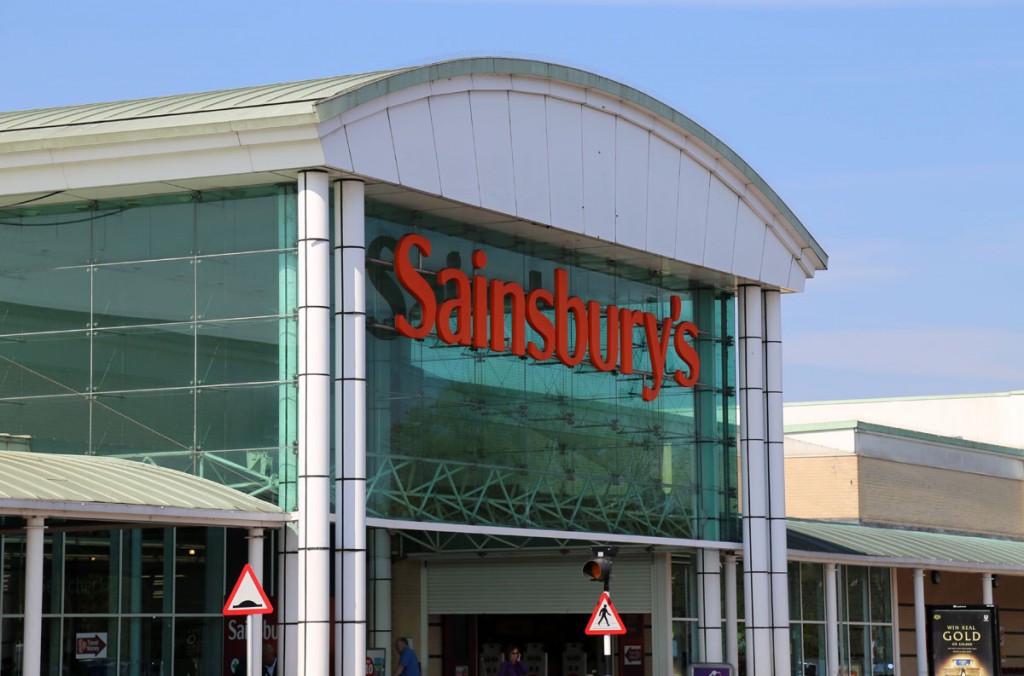
Sainsbury’s is one of a number of companies to bid for an Electricity Demand Reduction grant, as Whitehall eyes ways to keep the lights on in winter.
The Government is investing nearly £5 million to encourage leading UK firms such as Sainsbury’s, to install energy efficient lighting.
The money is part of an attempt by Whitehall to reduce peak time energy levels as fears rise that the National Grid will not be able to cope with electricity demands this winter, leading to nationwide blackouts.
A string of leading companies, including British Gas, Sainsbury’s, Sony and BAE Systems, have bid for funding in the second auction of the Electricity Demand Reduction (EDR) pilot.
Plumbing firm Wolseley UK received an EDR grant of £100k and is using the money to kit out its distribution centre with upgraded LED lighting.
The company claims that the new fixtures will reduce its electricity demand by 236,000 kWh, which is enough energy to power more than 300 homes.
Wolseley worked closely with Cloudfm on the maintenance work, a partnership that has also led to Wolseley’s head office in Leamington Spa being awarded a BREEAM “Excellent” rating.
The scheme works by encouraging consumers to provide capacity in the form of megawatts to help the UK meet its energy efficiency targets and reduce pressure on the National Grid. The pilot also reduces the energy bills of those involved.
The Government had originally allotted £6 million to the pilot, but a lack of uptake meant that not all the money was allocated.
This is the second time that an EDR auction has failed to reach its target, the first, held last year, saw only £1.28m out of a total of £10 million being snapped up.
edr · electricity demand reduction · energy reduction · LED downlights · LED lamps · led lighting · led panels · LED retrofit · led tubes · Novel Energy Lighting
The lighting industry is gearing up to launch a key weapon in the war on the deadly Zika virus – special LED lights.
Fred Maxik, the chief technology officer of Lighting Science, is exploring the possibility of constructing a special trap for the mosquito which carries the life-threatening infection.

Transmitted via a bite from the yellow fever mosquito, Zika is extremely serious for pregnant women, as there’s evidence it causes birth defects such as abnormally small heads. Experts now warn that they expect the Zika virus to spread to all countries in the Americas, including the Caribbean, except Chile and Canada.
Lighting Science – which uses special tuned lighting for applications such as water purification, turtle protection and space use – is developing a tuned light trap for the yellow fever mosquito. The company is already working with the US Department of Agriculture on its programme of light-based insect traps. With a little modification, it thinks it can develop one specially to help in the war on the Zika virus.
This is because different mosquitos are attracted to different wavelengths of light. By ‘tuning’ the light specifically at the yellow fever mosquito – or Aedes aegypti, to give it its scientific name – the light traps can be targeted.
‘There’s no one size fits all,’ Maxik told Fortune magazine this week. By testing the traps in the field, the company can work out exactly which spectral signature attracts and which repels the creatures. Special lights can then be developed to deter the mosquitoes from approaching buildings such as ante-natal clinics and hospitals in high-risk zones. ‘We’re trying to create light that’s useful for our own purposes.’
LED lamps · led lighting · led tubes · Novel Energy Lighting · tunable light · zika virus

